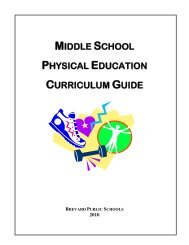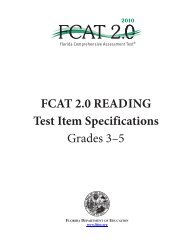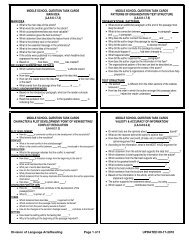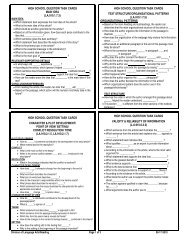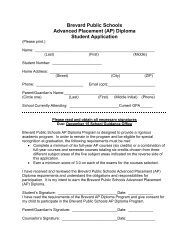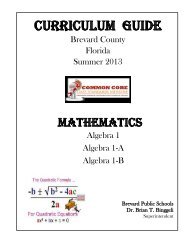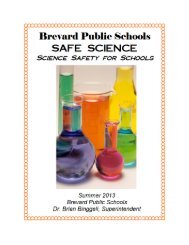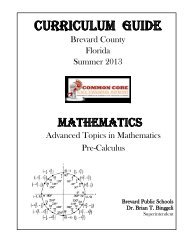Science Research Program Guide - Secondary Programs Home ...
Science Research Program Guide - Secondary Programs Home ...
Science Research Program Guide - Secondary Programs Home ...
You also want an ePaper? Increase the reach of your titles
YUMPU automatically turns print PDFs into web optimized ePapers that Google loves.
If you work with bacteria, chemicals or other organisms you must address safe-handling<br />
procedure, disposal procedure and care of organisms.<br />
Safe handling procedures may be cited from a source that is documented in the<br />
bibliography. They do not have to be completely rewritten.<br />
THE BACKGROUND: The first part of the background tells the reader your understanding of the<br />
subject when you started the project. Next, you might want to tell how you became interested in<br />
your project, or describe any "common knowledge" or "old wives' tales" you want to prove or<br />
disprove. Tell about information that you found as you researched your subject, such as:<br />
historical and scientific background, similar experiments already done by other people, and any<br />
contradictions or unanswered questions you may have found. You need to remember to give credit<br />
to sources you used for information. References used or quoted must be cited within the text. The<br />
discussion of your project is the heart of your paper. It usually contains several subsections.<br />
THE RESULTS begin by presenting all of your observations and data, in both the as -collected<br />
and processed forms. Discuss how and why your data was processed. Explain anything you<br />
assumed to process the data. Tables, charts, and graphs are very helpful. All graphics should be<br />
placed in the paper near the paragraphs in which they are discussed. An area needing extra<br />
attention is the labeling of graphs, charts, diagrams, and tables. Each must have its own descriptive<br />
title. All columns, axes, and data must be labeled clearly and identified.<br />
Make comparisons with theoretical values, published data, commonly held beliefs and/or<br />
expected results. Your conclusions and implications should flow smoothly and logically from your<br />
data. Be thorough. Let your readers know exactly what you did. Let them follow your train of<br />
thought. How did the data vary between repeated observations of similar events? How were your<br />
results affected by uncontrolled events? What are sources of possible error and how large were<br />
these errors? What would you do differently if you were to repeat this project? What other<br />
experiments remain to be conducted?<br />
The results and conclusions from your experiments should appear smoothly and logically<br />
throughout this discussion of your data, your method, your comparisons, and your errors.<br />
THE CONCLUSION is a summary of your results. The conclusion restates briefly the findings in<br />
relationship to your hypothesis. No new topics or speculations are to be mentioned. Remember<br />
that these conclusions are based on your work and experiments, not drawn from news articles and<br />
textbooks.<br />
THE BIBLIOGRAPHY gives credit to all of the sources you have used. A bibliography or list of<br />
references recognizes the information taken from the work and writings of other people. There are<br />
standard forms of references. See guides.<br />
FUTURE STUDIES, How would you continue this project? What areas are possibilities for<br />
‘future studies’?<br />
84



